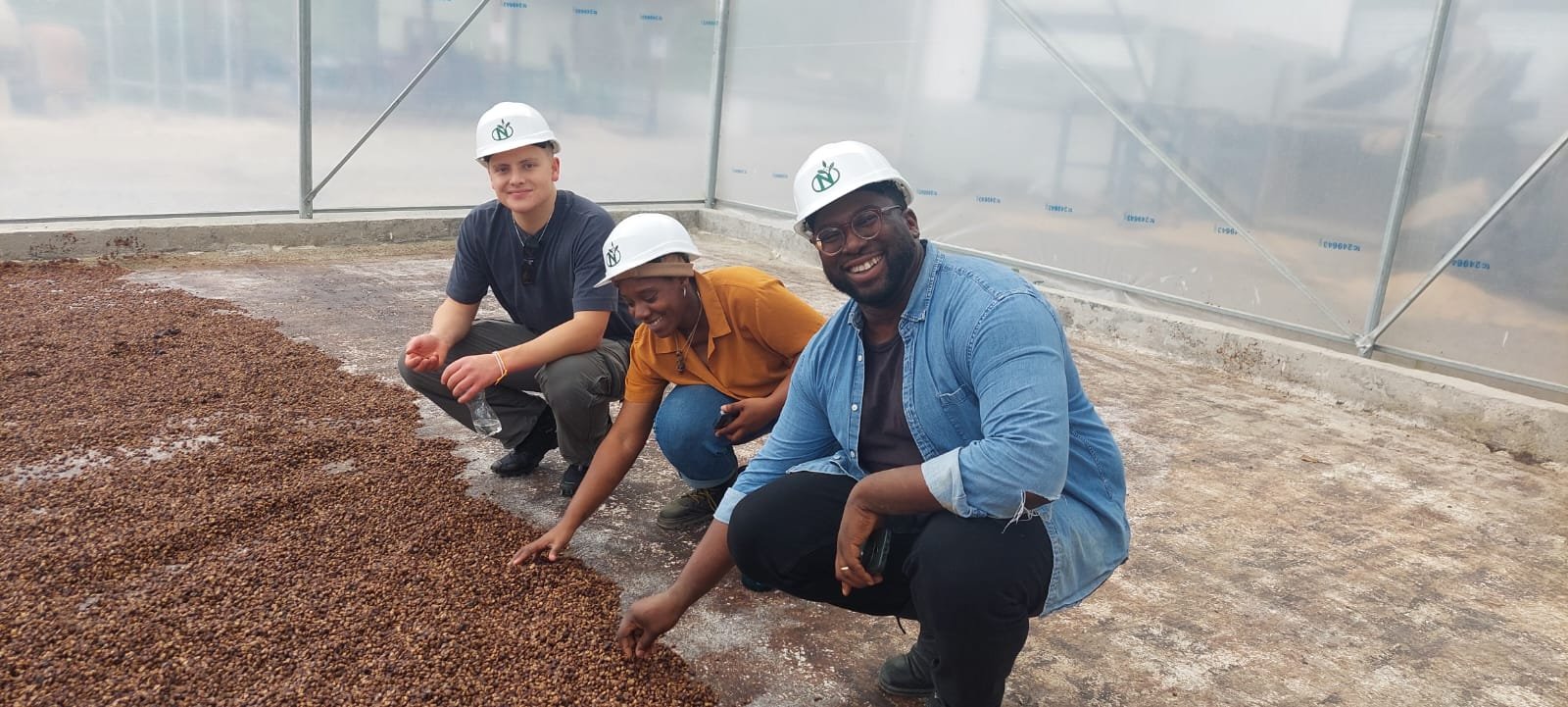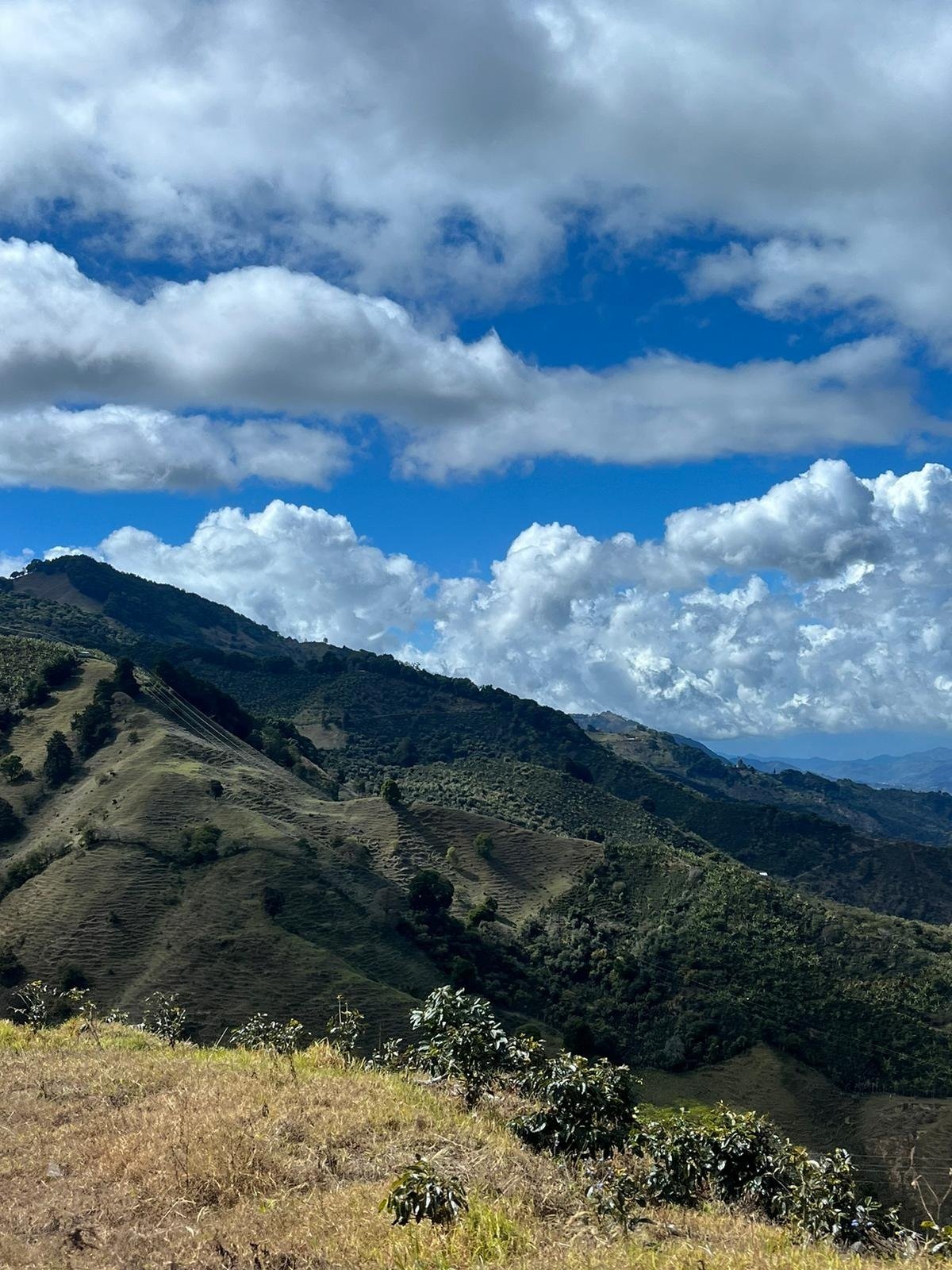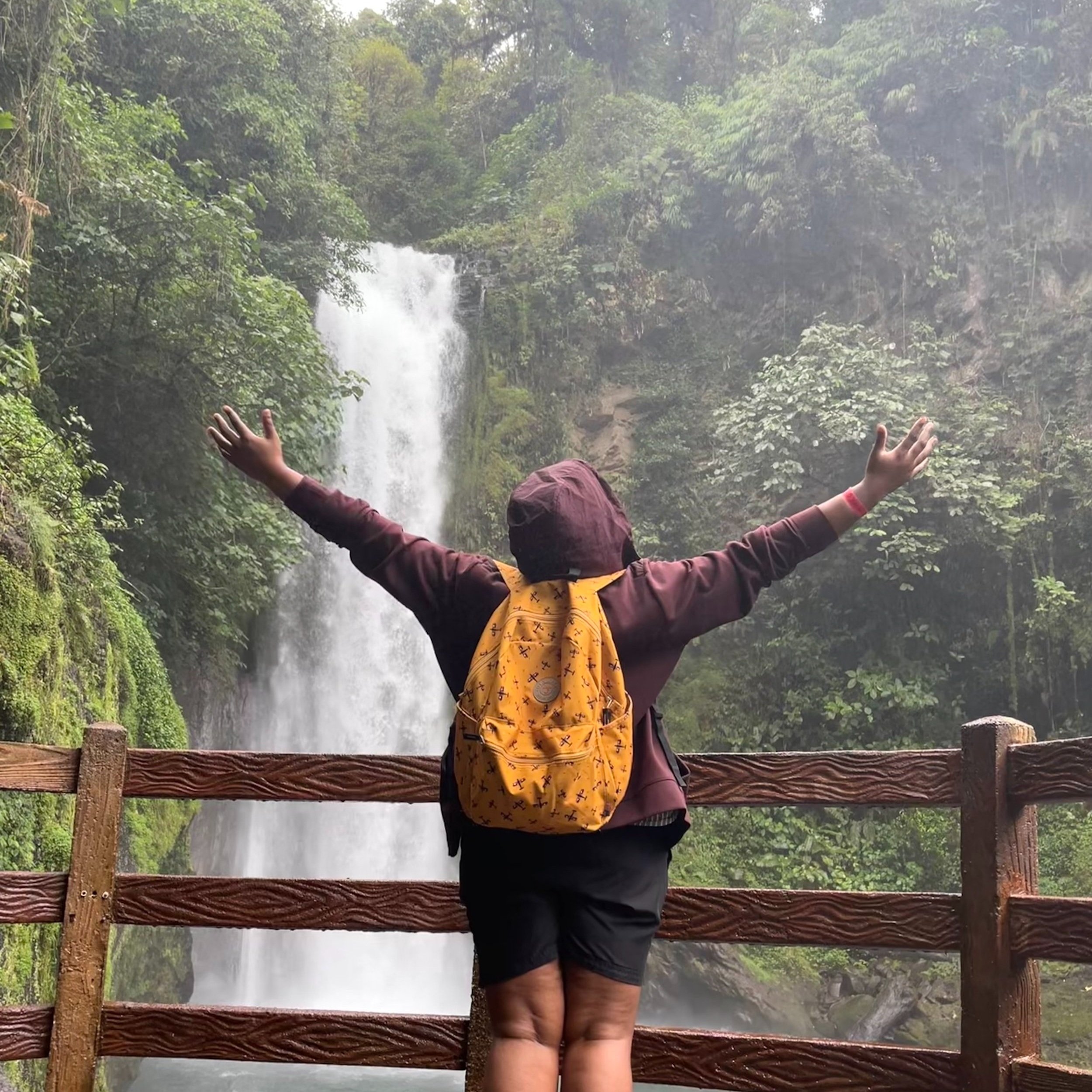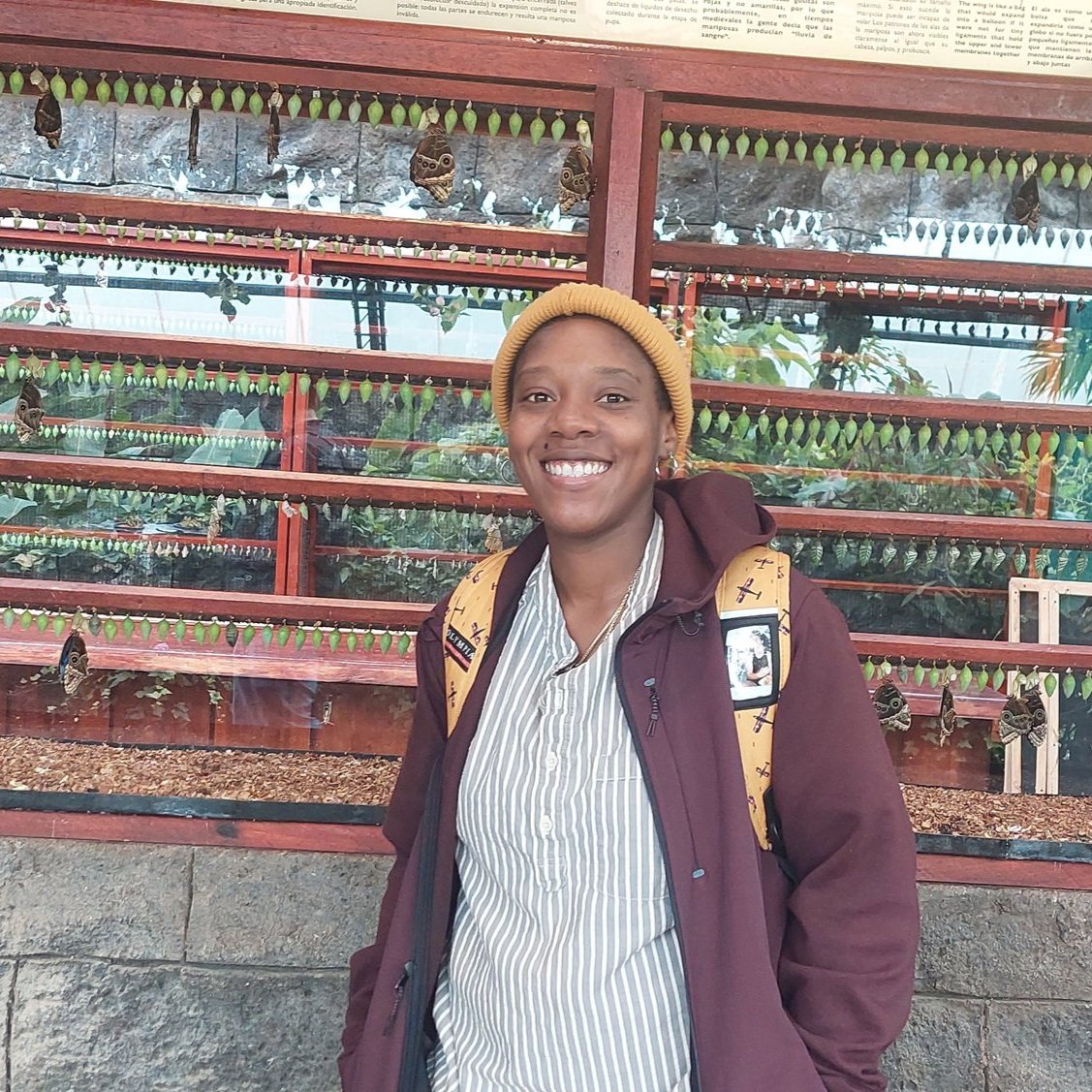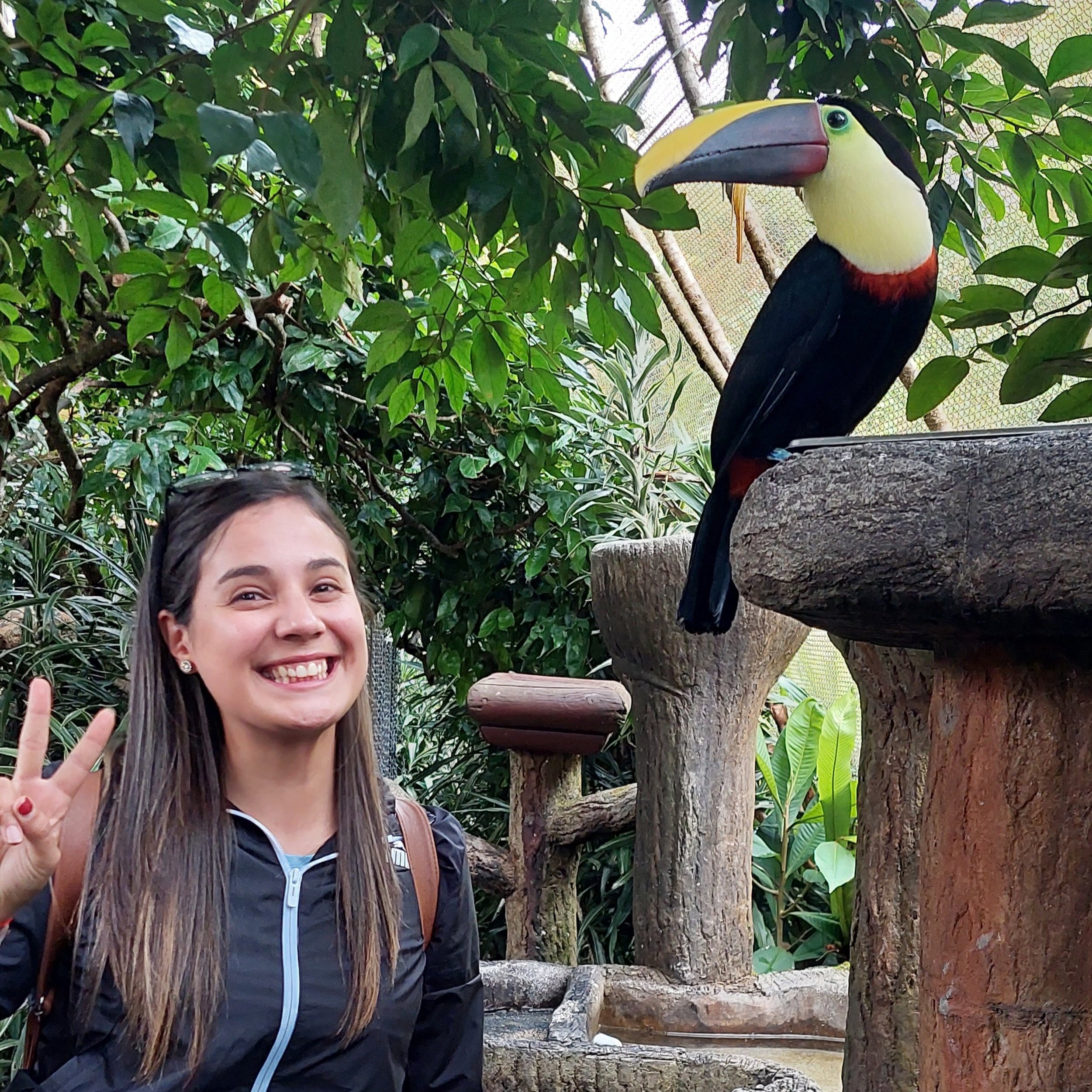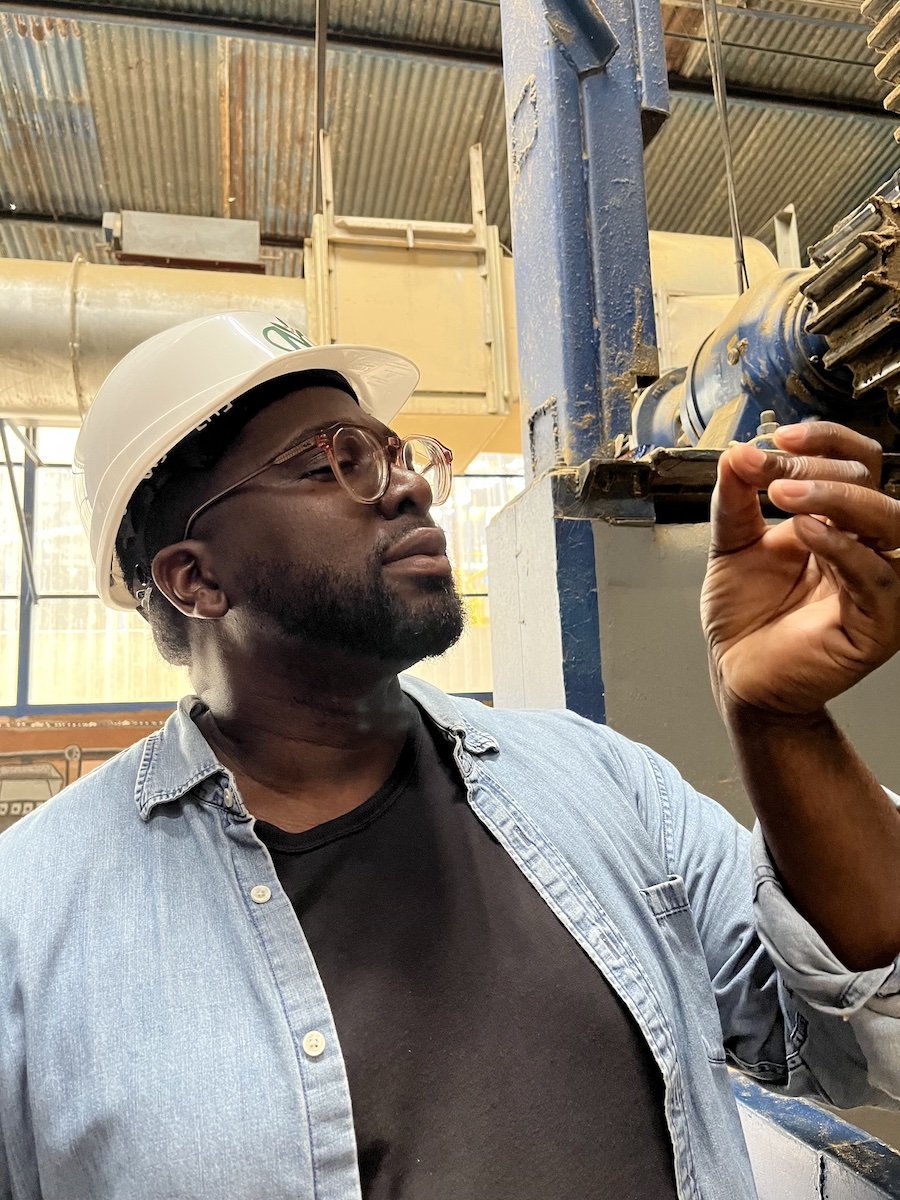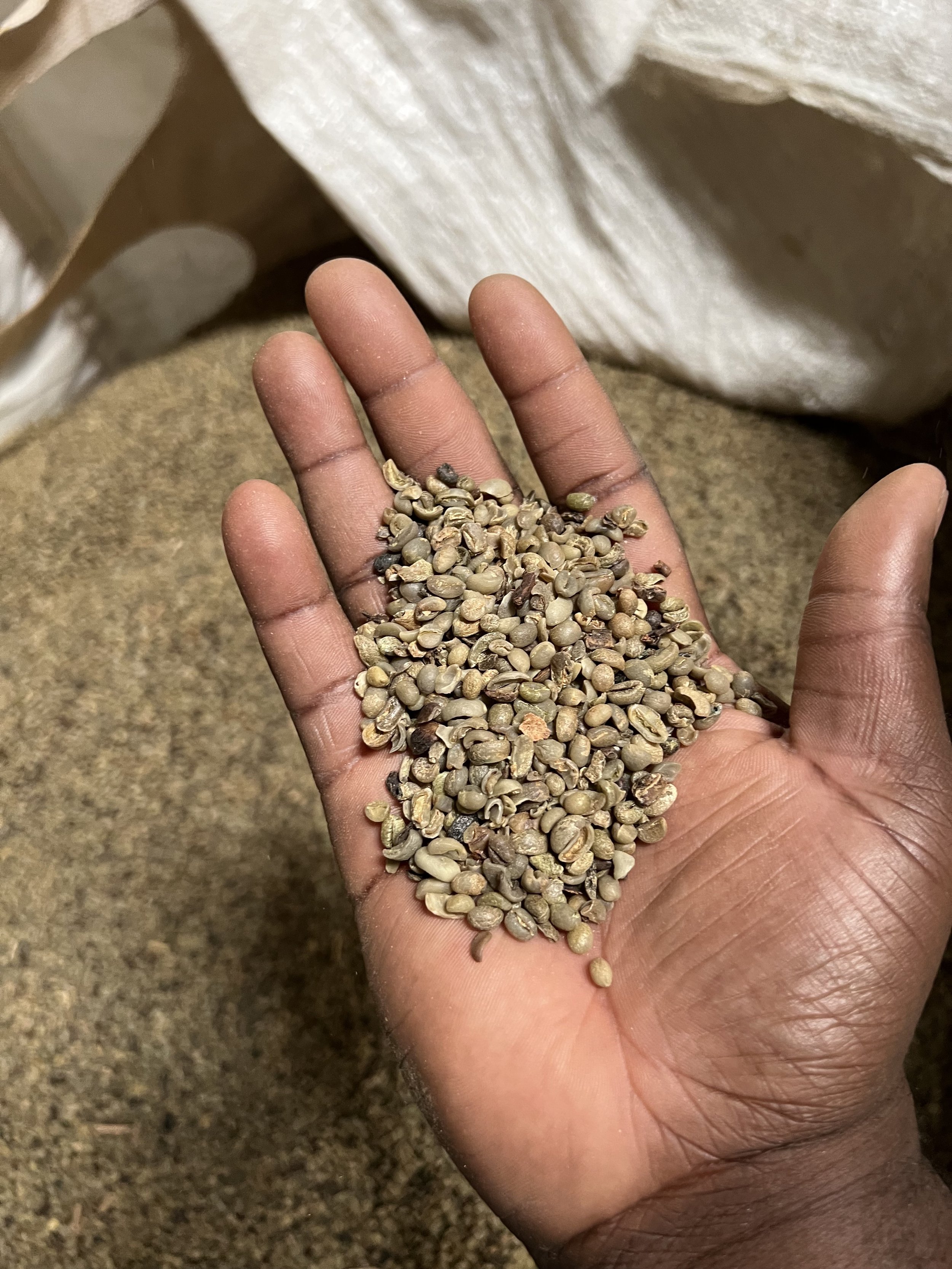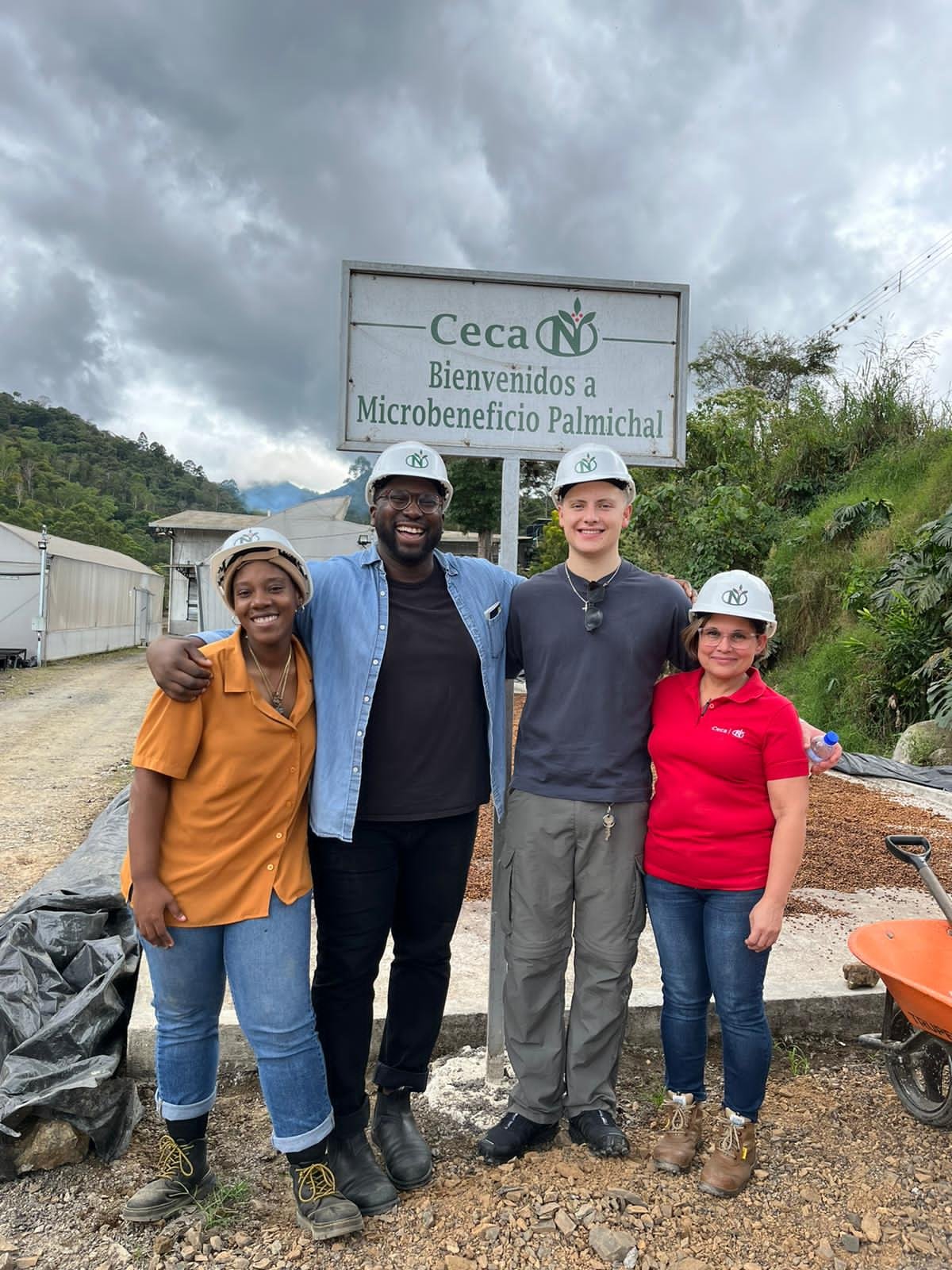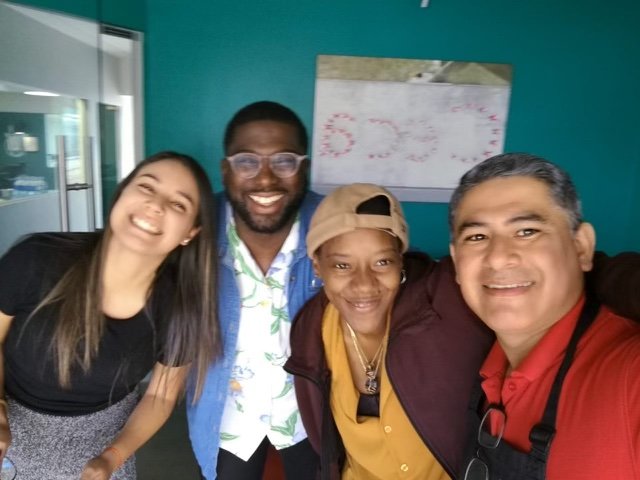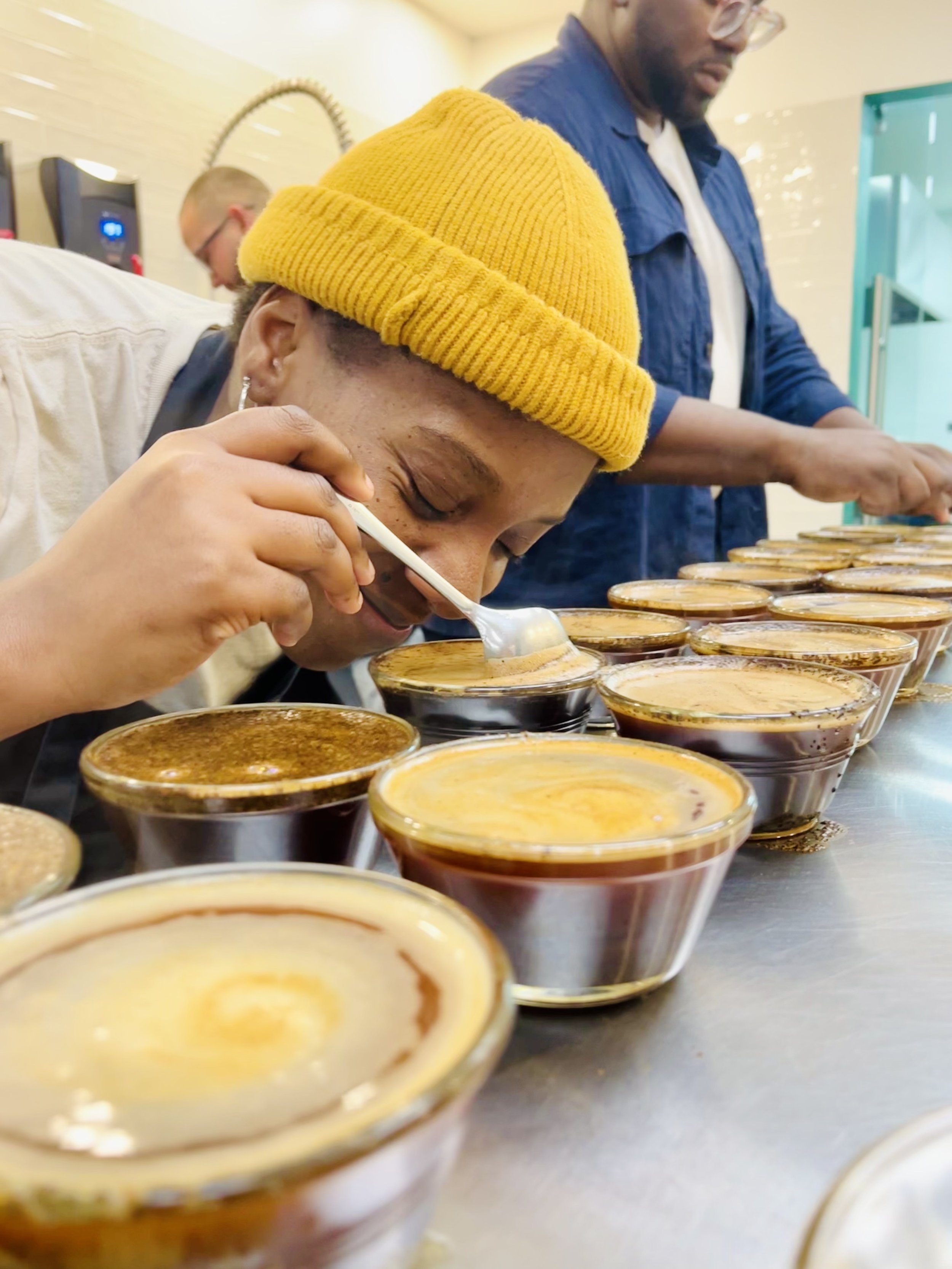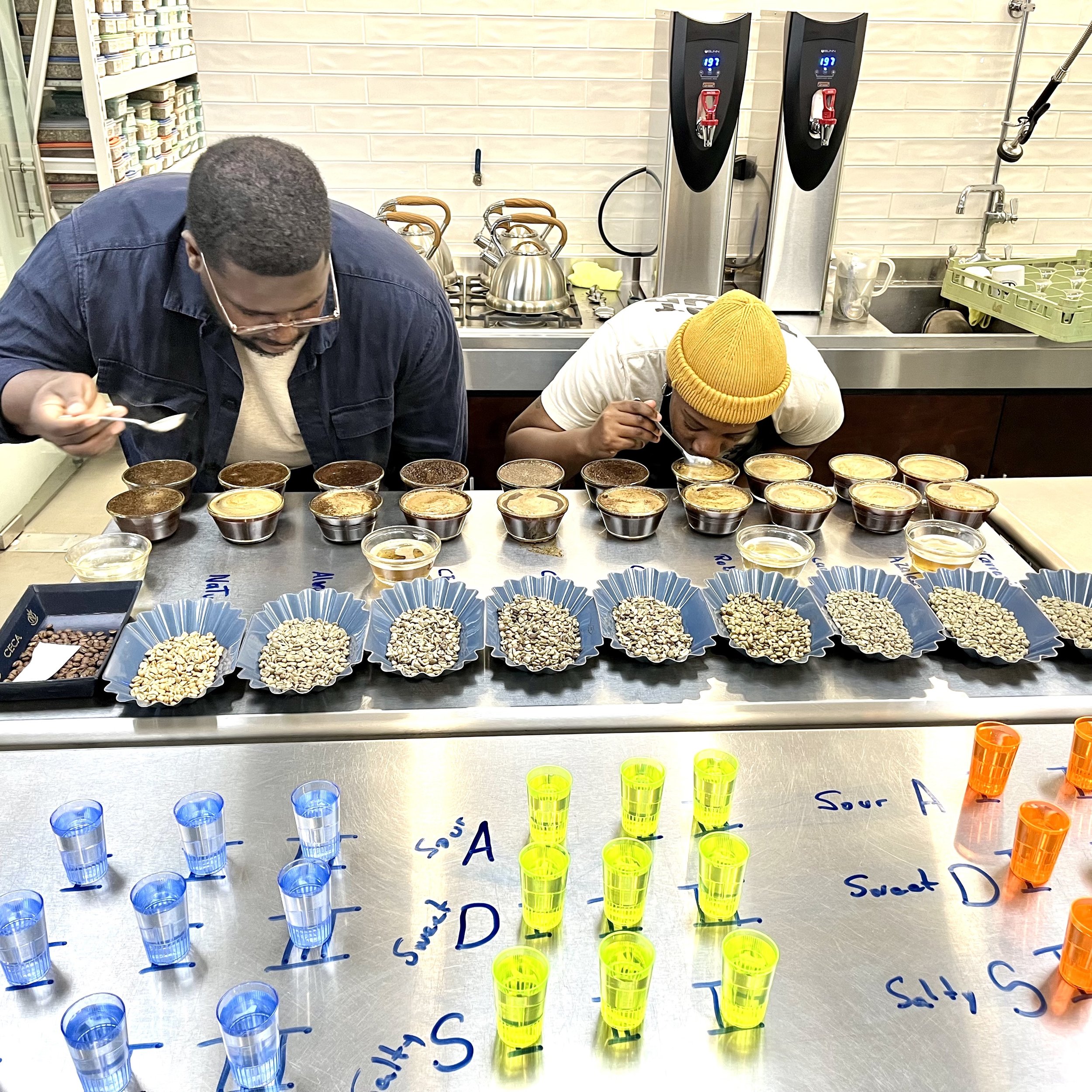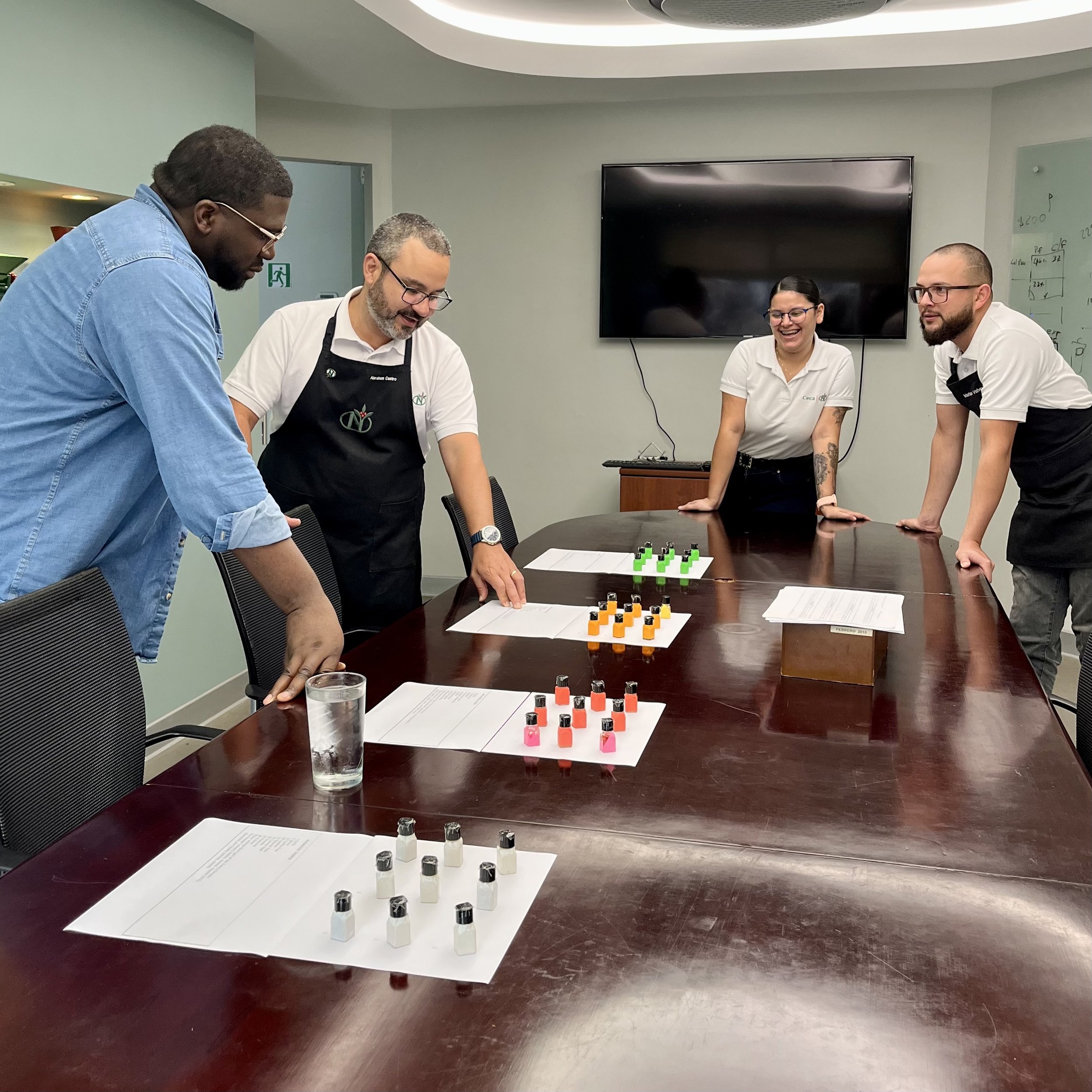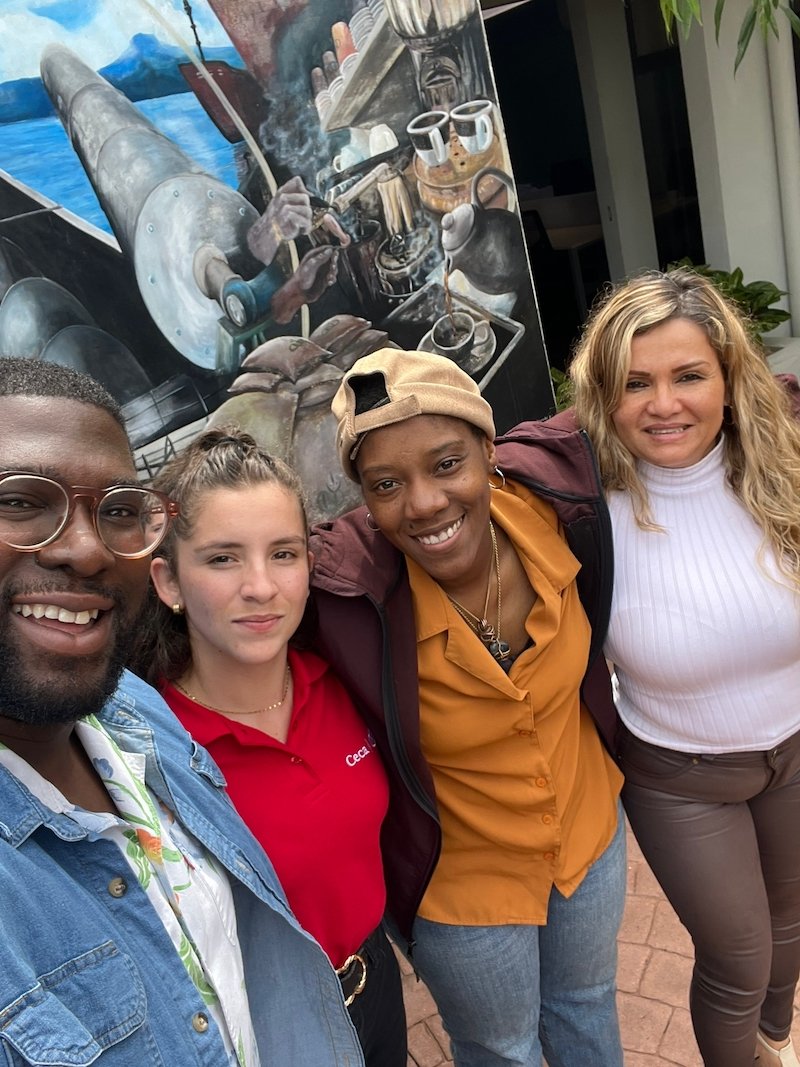Grounds for Learning: NKG PACE Partners Explore Coffee Production in Costa Rica
Jayy Terrell (center) with NKG PACE Graduate Charles Umeano (right) and a Ceca colleague.
By Jayy Terrell
In January, my brother-in-coffee Charles and I were fortunate enough to spend a week in Costa Rica during the harvest season. The general goal of our very first origin trip was to spend some time with NKG export company Ceca and to get an up-close look at the functions of a wet mill. It also didn’t hurt that Charles and I were two months from taking the Q, and the team in the Ceca QC lab is outstanding.
Our hosts were as gracious as can be. Charles was a day later in arriving, so my journey — thanks to some Ceca colleagues — began with a visit to the La Paz Waterfall Garden and Wildlife Park. For a wanderlust-prone body like myself, this was the best possible way to begin this trip: surrounded by the absolute majesty that is the Costa Rican countryside.
Even the drive up the mountain was a small lesson in Costa Rican topography and a glance at its economy, which includes not only coffee but also various fruits and dairy cows. It seemed like, around every hortensia-covered mountain corner, there was a small stand where a farmer waited eagerly to offer us samples of fresh strawberries (and all their delicious byproducts) or high-quality cheeses! Still others sold nuts, drinks or were managing full-blown cafes, ready to serve up Gallo Pinto — the traditional Costa Rican beans and rice — to any traveler desiring a taste of the comida typica.
After spending my first day exploring the waterfall gardens and reliving zoo trips of my youth, I headed back to my hotel to prepare for the week to come.
The Magical Palmichal Micromill
Bright and early Monday morning, Charles and I were picked up by Meylin Carranza (a certified Q-grader and junior trader for Ceca, and all by age 23, no less). She whisked us off to Beneficio Palmichal, where we were shown around the mill. I will never forget this moment, because stepping out of the truck and heading into the mass of machinery, I got a whiff of something that, until that point, I had only smelled via the Le Nez du Café kit: coffee pulp! It was such a sweet moment to tie this very powerful memory to a scent that thus far had only been a simulation!
During harvest season, the machines and processes run nonstop for three months on a special rotating basis. In the daytime, as we witnessed during our tour, a team is hard at work cleaning. This is because the loads of coffee cherries usually arrive in the evening (after a day of harvesting), which sets off the milling process. Coffee cherries are offloaded from truck beds via a two-man pulley system — complete with ropes and automatic spools — before being washed, pulped and processed.
Another notable aspect of the milling process at Palmichal is the sustainability work being done. On our stroll through to the drying beds and green rooms, we passed several giant white pools filled with what looked to me like the tan foam that remains after using a centrifugal juicer on a batch of apples. It turned out these pools play a crucial role in the sustainability of the milling process, as they are where the water is treated, post-processing. The gel that remains after this treatment is finished is used to make fertilizer, while the water — no longer toxic — is used in the irrigation fields.
As we strolled the campus, it was clear to see that the sustainability efforts being employed by the team were working wonders! All around the mill, the trees and grasses were beautiful and lush. We were all very pleased to see that, despite the loud, clanging machines and the rigorous processes happening, there was an abundance of birds and butterflies that found the area enjoyable. In any other place, one might conclude that the two — human activity on such a grand scale and regional wildlife — would be unable to coexist peacefully, but this was not the case at Ceca.
Later, when we returned to the mill after dinner, previously quiet machines were alive and humming with action! We witnessed the emptying of truckloads of cherries, the separation of seed from pulp from everything else, and the lively chatter of everyone putting the energy into make these processes successful.
Day Three: The Collective Hustle
The next day, my cohorts and I headed up the mountainside. In addition to picking coffee cherries off the trees with our own hands (!) we were able to witness the folks who do this work every day, in the middle of their collective hustle. On this particular day, the rainclouds were coming in hot, so it was obvious that everyone was moving fast.
We watched in awe as these men, many of them shorter and less substantial in body weight than us, climbed the mountainsides (which were no easy feat to navigate!) with their arms wrapped around giant bags of coffee cherries. In some cases, they even walked carefully up with the giant bags over their heads! Once they were on level ground, they each dumped their bags into giant bins weighing and taking stock of what they’d just collected – all at seemingly record speed.
The Ceca Experience
After two wonderful days at Palmichal, we headed back to the city of San Jose, to spend the remaining days of the visit at the Ceca office. I cannot overstate what an amazing experience this was. As a coffee lover, it was amazing to see the very natural “whistle while you work” ethos that seemed to permeate every nook and cranny of the office. From the Logistics quarters, where we sat with a different team member for each step of the outbound process, to (my admitted favorite) the QC lab, the genuine care taken by each person in every department was truly inspiring.
In addition to care, there is a very confident, capable efficiency that permeates the team. We watched Mauricio roast six samples at a time, with dozens more trays of green beans in the queue. In a separate corner of the lab, Marco green-grades at the speed of light, creating info tags and filing samples away into their rather intimidating inventory. The sounds of shuffling feet, clanging porcelain cupping bowls, and a burr grinder serve as the soundtrack, as Abraham, Jasmine, or any of the other four or five QC team members set up endless rows of coffees to be cupped.
It was at this point that we were able to try the coffees we had seen just days before, drying on drying beds and the enclosed patio floor.
Q Grader Prep
In addition to including us in an extensive cupping, the Ceca QC team created a very thorough Q-grader test prep program for us! Not only did they set up SWEET, SALTY and SOUR flavor modality tables for us, to practice this portion of the Q, but they dedicated an entire room to the portion of the test involving the Le Nez Du Café kit! We performed multiple rounds of triangulations together, as well as green bean roasting and roast identification. Without question, those two days at Ceca were my most in-depth, hands-on training for the Q Grader exam, and I was so grateful for them.
Costa Rica
One especially impactful thing I learned during this visit is that Costa Rica exports all the coffee it grows. For local consumption, it imports lower-quality coffee from surrounding producing countries. This really resonated with me, as a general way-of-life, during my time among many new colleagues I now call friends. One might liken it to art, this idea that there is something very honorable and joyful (maybe spiritual, even) about giving the best of oneself to others.
All in all, my first origin trip was full of revelatory moments about what hospitality looks like when it’s truly genuine, and also concrete skills that were solidified and sharpened around the table with colleagues. •
Jayy Terrell is an NKG PACE Graduate and a Q Grader who now covers QC and Customer Service on the InterAmerican Coffee team in San Diego.

